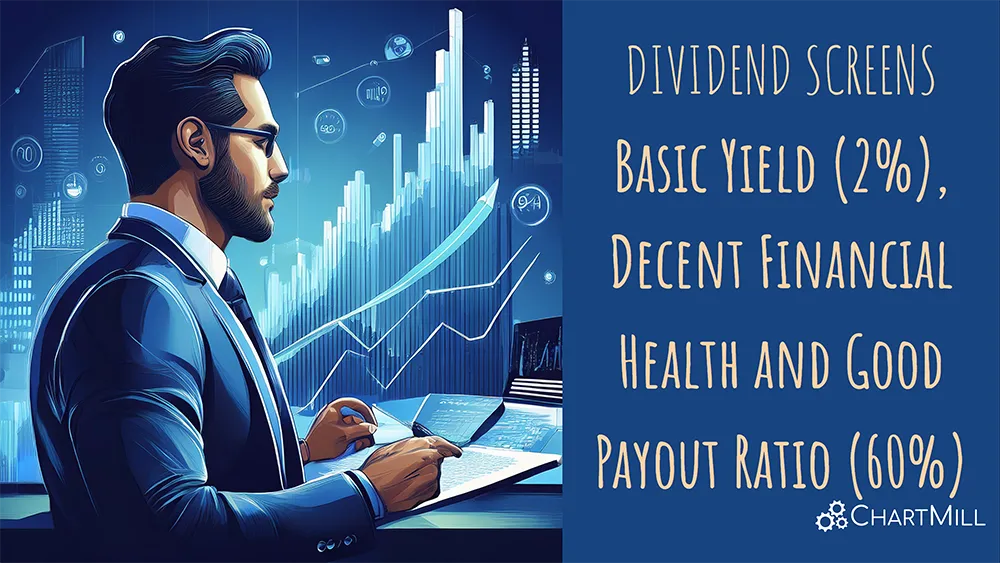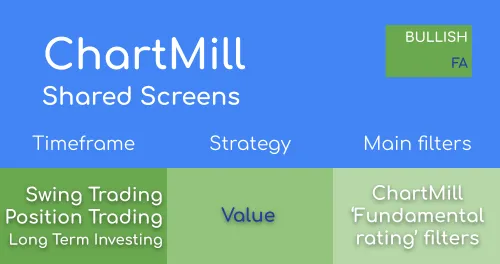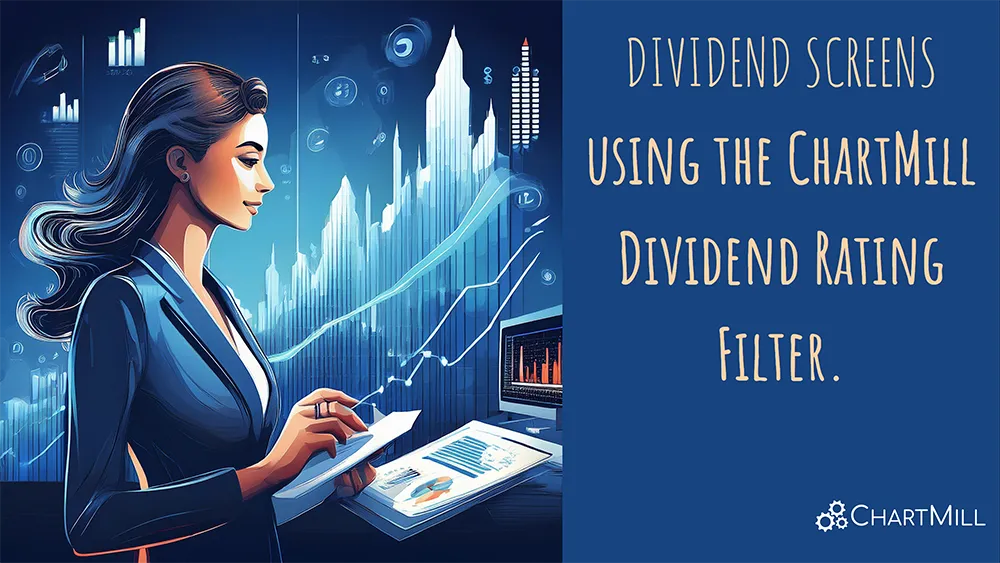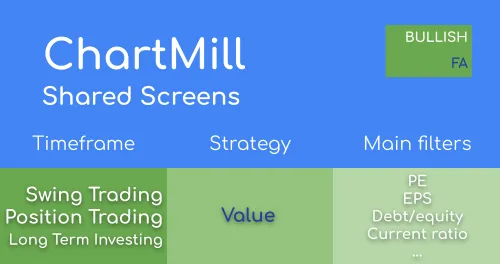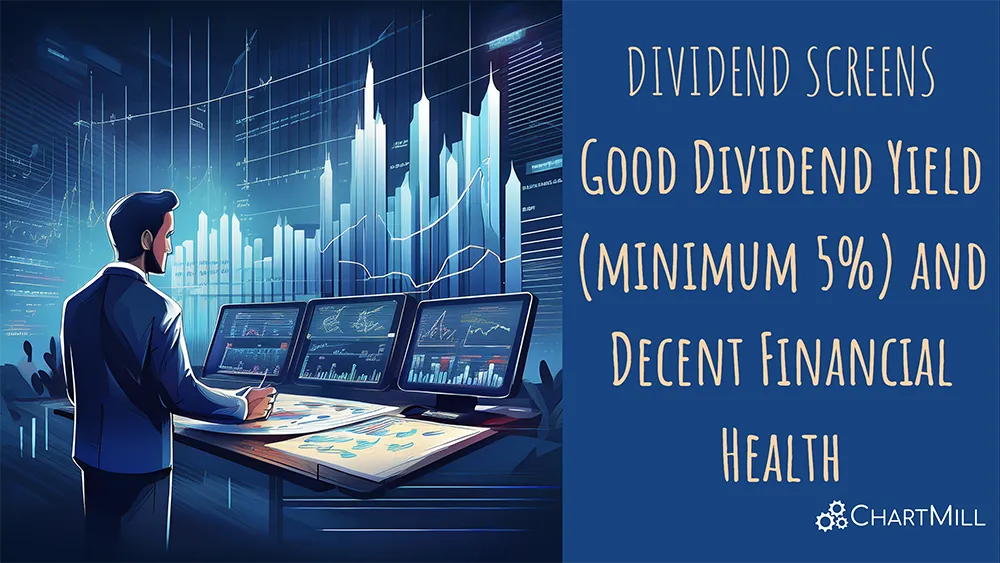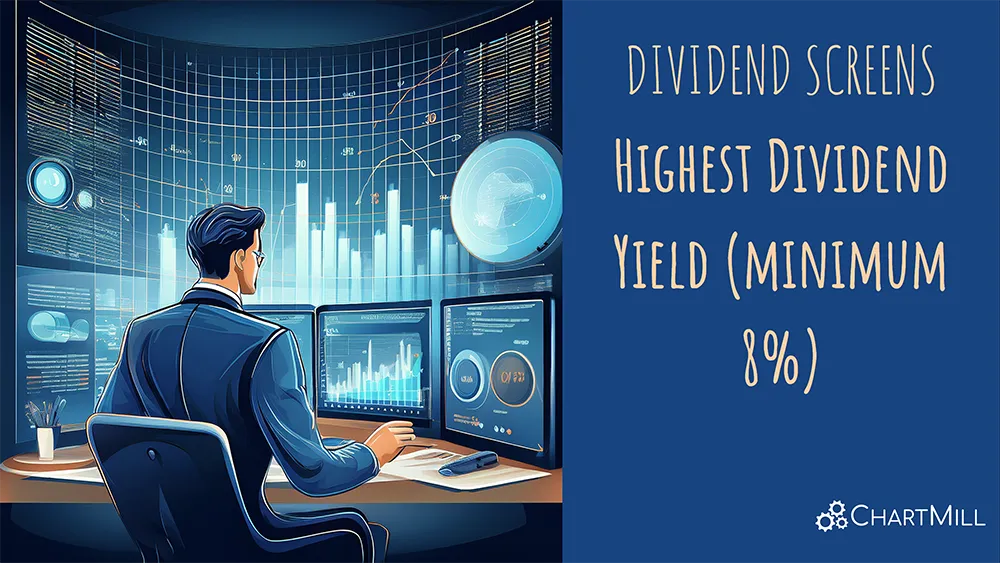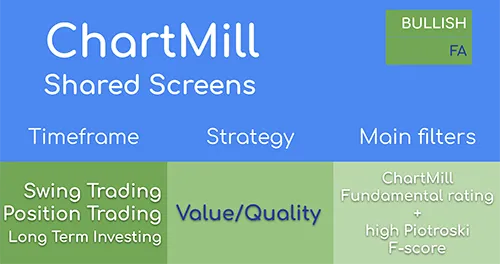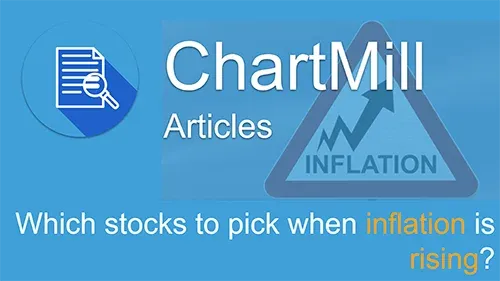
Which Stocks to Pick when Inflation is Rising?
By Kristoff De Turck - reviewed by Aldwin Keppens
Last update: Apr 19, 2024
Increasing inflation...
Anyone who has read a newspaper or watched a news report in recent weeks has undoubtedly read or heard the word "inflation" at least a few times.
Just to remind you, simply put, inflation means that the general price level of a lot of things rises, which means that with the same amount of money you can buy fewer things or purchase fewer services. Your money becomes worth less, so to speak, and this depreciation of money is called 'inflation'.
Inflation fits many bills which is why a distinction is made between different types of inflation.
-
Cost-push inflation
In case of cost inflation, it is the companies that pass on the increase of their costs in the prices of their (imported) goods or services. The increase in costs can be caused by, among other things, an increase in the purchase price of raw materials, increased wages, higher tax rates and exchange rate effects.
-
demand-pull inflation
When demand exceeds supply, demand-pull inflation occurs. The inability of businesses to meet increased demand leads to upward pressure on prices.
-
Profit Inflation
If companies increase the prices of their goods or services for the sole purpose of increasing profits then it is called profit inflation.
Regardless of what type of inflation is involved, it always means that there is an increase in the general price level and therefore the cost of living becomes more expensive. For investors, however, the inflation rate is also an important indicator because when it rises too quickly, it can cause the economic growth engine to stall.
The reason? If people's spending power declines, they will be less inclined to buy goods or services and companies will see their turnover and profits eroded. Ideally, there is 'a little' inflation, according to the ECB (EU) and the Federal Reserve (USA) this limit lies somewhere between 2 and 3%. This figure ensures the necessary price stability, so consumers continue to buy and companies can continue to grow at the same time.

Why invest in stocks when inflation is rising?
Inflation causes your money to decrease in value. To give an example, in March 2022 US inflation rose to 9.7% compared to March 2021, which is the strongest increase since 1976... In other words, since March of last year, life has become nearly 10% more expensive, hair-raising figures!
Unfortunately, it also means that your hard-earned money in a regular savings account - taking into account the current low savings rate - is evaporating at a rapid pace!
Equities are therefore a better choice, since company profits will rise along with inflation. Moreover, the dividends will also be increased, in line with corporate profits.
Now, the previous paragraph should be taken with a grain of salt... Not all companies benefit from rising inflation. This is only true for those companies that also manage to pass on rising inflationary costs to their customers. In technical jargon, this is called 'pricing power'. Now, adjusting prices (making them more expensive) is not difficult, but the question is whether existing customers will then start looking for alternatives, i.e. competitors where the price is lower.
Keep in mind that excessive inflation is negative for most businesses anyway. If purchasing power declines too rapidly, a large part of the population (and therefore potential consumers) will be forced to reduce or even completely cancel certain purchases in any case.
Before we dig a little bit deeper into what kind of stocks are best suited to counter rising inflation, one important note;
The very low savings rates (approximately since 2015/2016) have ensured that quite a few investors have already found their way to the stock market in their search for alternatives to the extremely low returns on their savings accounts. As a result, the prices of this asset class have already risen sharply. It is therefore important not to rush into buying stocks thinking that you will easily escape the money-losing phantom called inflation.
In addition, stock prices can fluctuate very sharply and current prices don't always reflect the real value of the company. The ongoing volatile environment with the fallout of the Corona pandemic and especially the current uncertainty following the war in Ukraine means that you will regularly be confronted with very sharp - often purely sentiment-driven - price swings.
Value versus growth
Growth stocks are sensitive to interest rates, so it is not surprising that when inflation rises, these kind of stocks are the first to feel the pinch.
Growth companies are usually companies that have to make substantial investments. Higher interest rates increase the capital costs of these companies fairly quickly and, on top of that, the valuation of these companies is largely based on future profits that look a lot less impressive when interest rates rise... It is therefore not surprising that, with increasing uncertainty about the future economy, investors are more inclined to choose safer havens, prefering valuation rather than growth.
More certainty implies that investors will be more interested in established companies with strong balance sheets and proven cash flows.
Basic Screens:
- Explore the 'related screens' section next to this article for some predefined trading ideas.
- How to screen and select the best value stocks?
Banks
This sector may bring back some bad memories especially for more experienced or older investors. However, there is no doubt that it is mainly banks that can benefit from a rapidly rising interest rate curve. The greater the difference between short-term interest rates (the rate at which the bank attracts capital) and long-term interest rates (the rate at which banks lend capital), the greater the profit margin for the banks. Rising interest rates automatically mean higher interest income for banks.
This profit model has been under severe pressure for some time now due to the historically low interest rates, a rapid rise in the yield curve could certainly provide a boost here, provided the economy does not lapse into stagflation and banks actually see their loans repaid of course...
Basic Screens:
Focus on pricing power
These are companies that have the ability to pass on higher costs to their customers, primarily products that are necessary and where there is a certain degree of dependence so that demand does not drop dramatically as soon as the price rises.
The energy and commodities industries are classic examples of sectors with considerable pricing power. But don't forget the food and drug industries, which also fall into the category of "basic products", even with skyrocketing inflation, people still need to eat and medicines need to be taken on time...
And what about the semiconductor industry where demand has long exceeded supply many times over? Even (luxury) products that can rely on a multitude of loyal followers and high brand loyalty can usually afford to raise their prices without too many negative consequences.
When selecting individual stocks in this pool, it is appropriate to keep an eye on their operational efficiency. What costs are necessary to achieve the result? Companies that can keep their costs down and thus maintain a higher profit margin have an edge. After all, if inflation rises too sharply, it is not always obvious even for companies with a great deal of pricing power to fully pass on the higher costs to their customers. Companies with profit margins that are too low will then experience the adverse effects more quickly because they have less of a buffer.
Example screen:
Stable dividends
Another fairly simple way to protect yourself from inflation is to select companies that pay a reasonable dividend.
Now, it will be very difficult to find companies whose dividends are sufficient to offset the full effect of inflation. Don't fall into the trap of simply picking companies that offer very high dividend% but go for strong, quality companies with a firm and stable dividend policy and an acceptable payout ratio. These will usually be established value stocks with a solid market position.
Basic Screens:
- On this page you will find several predefined dividend trading ideas which you can use as a basis.
- How to screen and select the best dividend stocks?
Summarized
Making a portfolio more inflation-resistant is done from a long-term perspective where you believe that higher-than-normal inflation will continue to be an essential part of the economy in the years ahead. Whether this will also be the case no one knows for sure but ultimately, as an investor, you have to draw up a strategy and maintain it.
A focus on sectors and stocks that are now low valued due to heavy volatile price movements and that have characteristics discussed in this contribution will most likely not be a bad choice. The screens mentioned above are a basis from which to compare different companies within the same industry or sector. The more inflation-protected characteristics are present the better (inflation-protected sector/industry, financially sound and undervalued, stable dividend growth, decent operating margin,...)
This article is meant as a first step towards a more thorough analysis of individual companies in order to make informed investment decisions.

